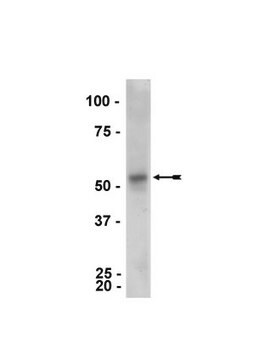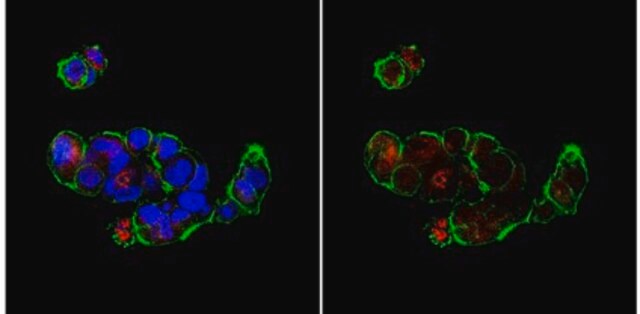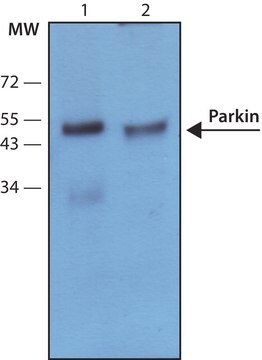06-536
Przeciwciało anty-Bak, NT
Upstate®, from rabbit
Synonim(y):
Regulator apoptozy BAK, antagonista/zabójca BCL2 1, białko BCL2-podobne 7, homologiczny antagonista/zabójca Bcl-2, białko Bcl-2-podobne 7, białko proapoptotyczne BAK
About This Item
Polecane produkty
pochodzenie biologiczne
rabbit
Poziom jakości
forma przeciwciała
purified antibody
rodzaj przeciwciała
primary antibodies
klon
polyclonal
reaktywność gatunkowa
mouse, rat, human
producent / nazwa handlowa
Upstate®
metody
immunocytochemistry: suitable
immunohistochemistry: suitable
immunoprecipitation (IP): suitable
western blot: suitable
izotyp
IgG
numer dostępu NCBI
numer dostępu UniProt
Warunki transportu
dry ice
docelowa modyfikacja potranslacyjna
unmodified
informacje o genach
human ... BAK1(578)
Opis ogólny
Specyficzność
Immunogen
Zastosowanie
5 μg/mL poprzedniej partii wykryło Bak w zatopionej w parafinie tkance nerki szczura.
Immunoprecypitacja:
4 μg poprzedniej partii immunoprecypitowało Bak z 500 μg lizatu mysich komórek 3T3.
Apoptoza i rak
BCL2 i inhibicja
Jakość
Western Blotting Analysis:
1:500 dilution of this antibody detected Bak on 10 µg of HEK293 lysates.
Opis wartości docelowych
Powiązanie
Postać fizyczna
Przechowywanie i stabilność
Komentarz do analizy
Pozytywna kontrola antygenu: Katalog #12-301, niestymulowany lizat komórek A431. Dodać 2,5 µl 2-merkaptoetanolu/100 µl lizatu i gotować przez 5 minut w celu zredukowania preparatu. Załadować 20 µg zredukowanego lizatu na pas do minigelów.
Inne uwagi
Informacje prawne
Oświadczenie o zrzeczeniu się odpowiedzialności
Nie możesz znaleźć właściwego produktu?
Wypróbuj nasz Narzędzie selektora produktów.
polecane
Kod klasy składowania
12 - Non Combustible Liquids
Klasa zagrożenia wodnego (WGK)
WGK 1
Temperatura zapłonu (°F)
Not applicable
Temperatura zapłonu (°C)
Not applicable
Certyfikaty analizy (CoA)
Poszukaj Certyfikaty analizy (CoA), wpisując numer partii/serii produktów. Numery serii i partii można znaleźć na etykiecie produktu po słowach „seria” lub „partia”.
Masz już ten produkt?
Dokumenty związane z niedawno zakupionymi produktami zostały zamieszczone w Bibliotece dokumentów.
Nasz zespół naukowców ma doświadczenie we wszystkich obszarach badań, w tym w naukach przyrodniczych, materiałoznawstwie, syntezie chemicznej, chromatografii, analityce i wielu innych dziedzinach.
Skontaktuj się z zespołem ds. pomocy technicznej








